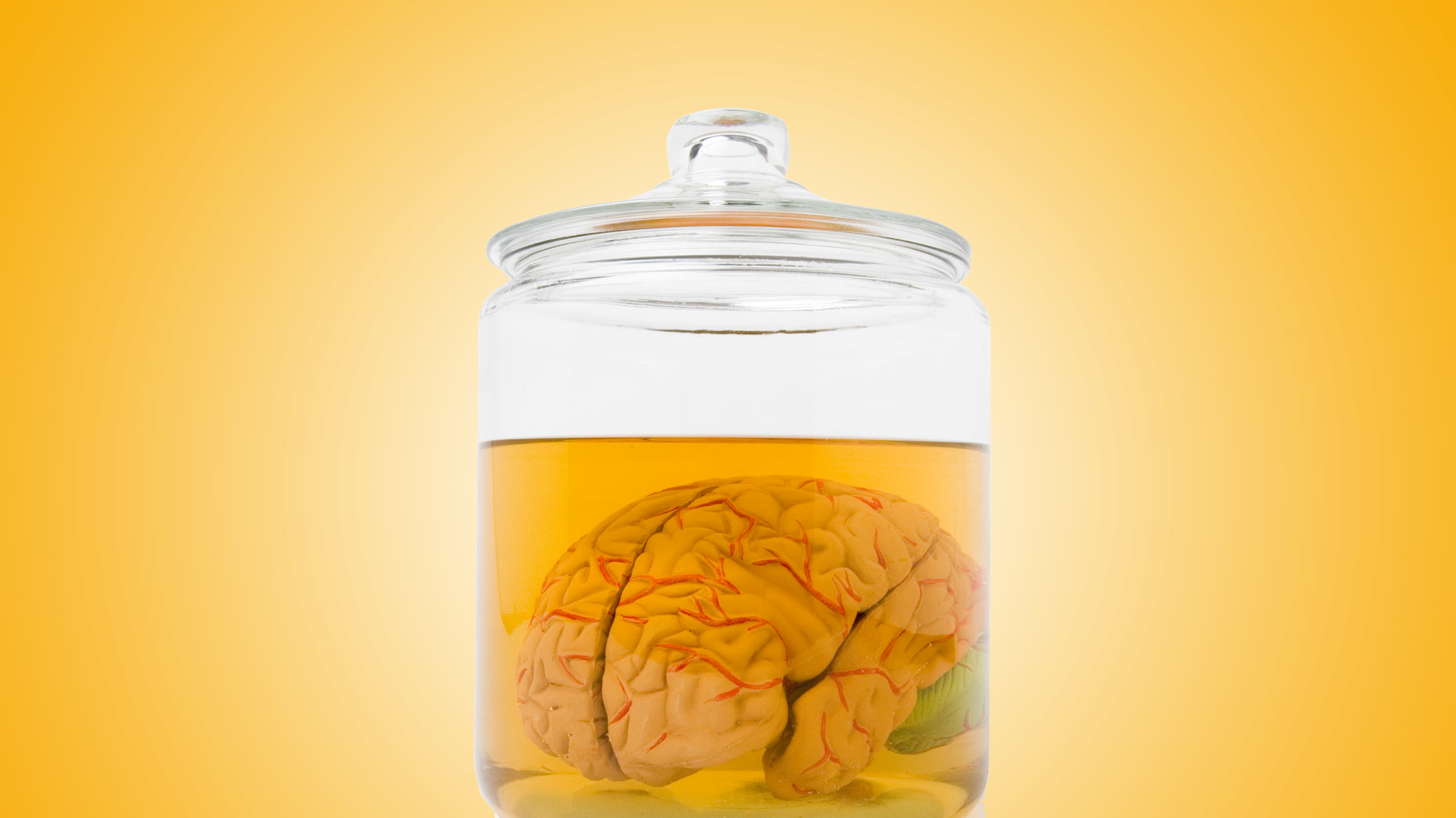Last week a scientific contest came to a close with a new winner: cryonics. The idea of preserving the body after death for eventual reanimation went from pseudo science to plausible scientific venture.
And now we have to decide what to do with it.
Five years ago the Brain Preservation Foundation issues a challenge: find a way to preserve a mammalian brain without damage to any of the neurons or synapses, in a process called cryopreservation.
As a field of study (and a sometimes foundation of science fiction), cryonics has always gotten a sort of blunt treatment: the idea being that if you flash freeze a person just the right way, you can unfreeze them at a later date (perhaps when their terminal illness is curable) and let them live a full life. That’s not so far off from what scientists were hoping they could do in the past, even though the process usually created more problems than it had the potential of solving.
Until this week, that had been a process impossible to complete. But a team from 21st Century Medicine led by a recent MIT graduate has succeeded in keeping a rabbit brain for a single degradation, proving that in fact science fiction is possible after all. There’s much research to be done yet before it’s a human question: the process has to be applied to larger brains, and then perhaps a human brain.
That’s one of the many things to figure out before this technology can actually be applied helpfully. Joao Pedro de Magalhães, a lecturer at the University of Liverpool Institute of Integrative Biology, says there are other massive hurdles. “In addition to the issue of brain size, we still lack the technology to scan the mammalian brain with the necessary accuracy,” he explains, “and we are still a long way off from replicating the mammalian brain in a computer. So having a human mind running on a computer is still in the realms of science fiction. “
And it stays science fiction as long as we don’t know how long it will take to make a reality. “I don’t think there is any consensus [on a timeline],” says Magalhães, “and while anybody can speculate on how long it will take (from dozens to thousands of years), the reality is that we don’t know.”
While researchers figure that out, society has to begin to grapple with a new problem: what do we do with a perfectly preserved brain. The hypotheticals are (pardon the pun) hard to wrap your head around. Because this isn’t just cloning: it’s preserving memories, motor functions, learned behaviors and relationships, forever.
But where? A computer? A new clone body? Something in between?
“I think people have very different views,” says Anders Sandberg, the James Martin Research Fellow at the Future of Humanity Institute at the University of Oxford. Sandberg says there are many neuroscientists who don’t want to sound too much like science fiction fans: “they want to solve neuroscience problems and maybe one day figure out how brains do what they do.”
“Others think that the eventual goal of brain emulations is worthwhile,” he explains, “either as a road towards personal immortality or as a way of getting software intelligence. Whether this will just be fast software people living in VR, occasionally controlling telepresence bodies in the “real” world, or even downloading themselves in suitable cloned bodies depends on the person doing the visioneering.”
Sandberg’s own view is a mix of these. “One should not expect too much too soon,” he says, “but it is important to have ambitious long-term visions. Brain emulation is like going to the moon, the Human Brain Project aims is like launching a satellite, and many neuroscientists are busy building rockets. We need the rockets for the satellite, and satellites for the moonshot.”
A few (other) Oxford scientists had some thoughts on that a few years ago, when they told The Independent that they’d like to be downloaded onto a computer.
Dr. Ole Martin Moen is part of the UK Cryonics and Cryopreservation Research Network. He works in applied ethics at the University of Oslo. He says that people pursue cryonics for different reasons. “Speaking for myself, I am not particularly attracted to the idea of living forever as a computer simulation,” he explained. “I do not think computer simulations are sentient and I think sentience is a precondition for value.”
In fact, the more you look into the “what’s next” question, the more cryonics resembles the afterlife question, because many people have different ideas about how it should work.
Moen thinks becoming part of a computer’s memory system defeats the purpose of Cryonics. “I think people can be dead even if their data still exist,” he says, “Cryonics, however, does not reduce people to data or make them part of a computer network. That is what uploading does.”
As an aside, the Magalhães explored the identity issue in an essay that’s worth reading.
But to the point, it becomes a bit of a personal choice. While most of us would love to be in our early 20s again, some people don’t want a new body: they want to keep living in their own. Moen doesn’t really like the idea of being cloned into a new body either. “What attracts me to cryonics is that it allows for the preservation of my specific body,” he says.
But cryonics isn’t about an answer to that question, just a process to get you to the chance to decide. We haven’t yet figured out what to do next, but it does become a question of whether someone freezes themselves because they want to cheat death out of a few more years, or elude it entirely.
You probably know this field as the burial alternative for rich eccentrics—Ted Williams is probably one of the more famous people who paid to, upon his moment of death, have a laboratory team remove his head, pump his arteries with coolant, and store his cranium and brain in a way that would prevent decay.
The idea is that some day far in the future, Ted and all the other dozens of people currently “on ice” will be reanimated, coming back to life as it were, to finish out what ended perhaps too prematurely.
But without a body, someone like Ted would be limited to a few options. He can be downloaded and accessed, and maybe allowed to exist as a computer interface. That doesn’t really give a “person” much chance to explore anything of the human experience. No touching, not intimacy, no hormones.
Being stuck onto a new body gives the cryonics specimen a second life, sure, but what’s next? You’d have to ask the movies at this point. Vanilla Sky, Bicentennial Man, The Sixth Day, Encino Man… they’ve all got elements of this question about life outside of what’s expected. Most of them don’t have very happy endings.
Luckily we don’t really have to worry yet.
Magalhães confirms that, at least for now, brains successfully preserved with the new treatment won’t be “revived” any time in the future. “This latest technique is that it employs a deadly chemical. So future revival of a brain preserved with this method may not be possible. Nonetheless, and although much work remains, these latest results show that the idea of human medical biostasis has potential and hopefully it will gain more acceptance by the scientific and medical communities.”
Sandberg is optimistic about the future. He doesn’t see a problem with evolving to another state of being. “I think people are people, even if their bodies are new and perhaps immortal. Society has adapted to dramatic shifts in the past (think of the transition from hunter-gatherers to agriculture and industrial society, a doubling over the 20th century of lifespans, the Pill, globalisation…) and will do so again—not always painlessly, but just because that is what humans do.”
And Magalhães seems to think humanity will come around. “If we ever reach that stage, I suspect that humankind will be so different then that any predictions we make now are very likely to be wrong. Having said that, I think the issue of artificial intelligence and artificial life (in forms that are simpler than the human mind) is important, timely and needs further discussion.”
Those are big questions for extremes though. While cryonics has a potential as a sort of apocalyptic technology, learning about it has more immediate benefits, like protecting people from brain injuries, and potentially reversing brain damage for people who may have died briefly and been resuscitated. It’s not just about Brendan Frasier and Ted Williams.
And Moen was quick to contextualize that, and to reduce the fictional aspects to a sense of reality. “I do not see why religions should be opposed to cryonics. Cryonics is radical in one respect,“ he says, “but its aim is just to preserve lives that would otherwise be lost. As such, it is not fundamentally different from other life saving technologies.”



